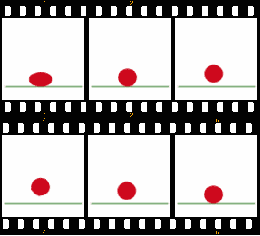To describe a definition for the medium specificity of animation is quite a difficult task for someone, like myself, who doesn’t believe animation has a medium specificity. Of all the art forms that have ever been created, animation has proven that it can be done with any kind of medium. The only element that is universal in all the mediums used to create animation is the use of time and motion. Animated films have been created in computer, created by pencil on paper, made in sand, painted on glass, pixilated people and environments, or scratched on film. Animation is only restricted to the capacity of the artist’s mind who is creating it.
No medium can clearly be defined as an animation medium unless you only include popular culture’s representation of animation through Hollywood films. A popular majority I’m sure would agree that the computer is the medium of animation nowadays. All animated features are created using the computer in recent years and it is perhaps the only art form that is utilizing the computer to create art on a commercial level of success that the common members of society can relate to. It used to be that animated films were confined to the medium of film, but with the replacement of film with digital projectors, even that cannot be completely defined as an animation specific medium.
Animation medium specificity is indefinable. Animation can be created on film, in computers, with a string and a round disc with an image on each side, or in the corner pages of your 8th grade math book. If the persistence of vision can be achieved, animation can be realized into a physical moving piece of artwork. I think that there are artists over time that have put themselves into a genre of animated filmmaking that allows their particular body of work to lend itself to specifying a medium in their work, such as Len Lye and direct film manipulation animations. Artists in the field of animation choose to focus on one or a few different mediums of representation in animation that they enjoy most, and therefore specify their medium to define who they are in the field of animation and what their specialty is in animated filmmaking. But, animation as a general art form encompassing all types, mediums, and presentations does not bare a sense of medium specificity (in my opinion ).










